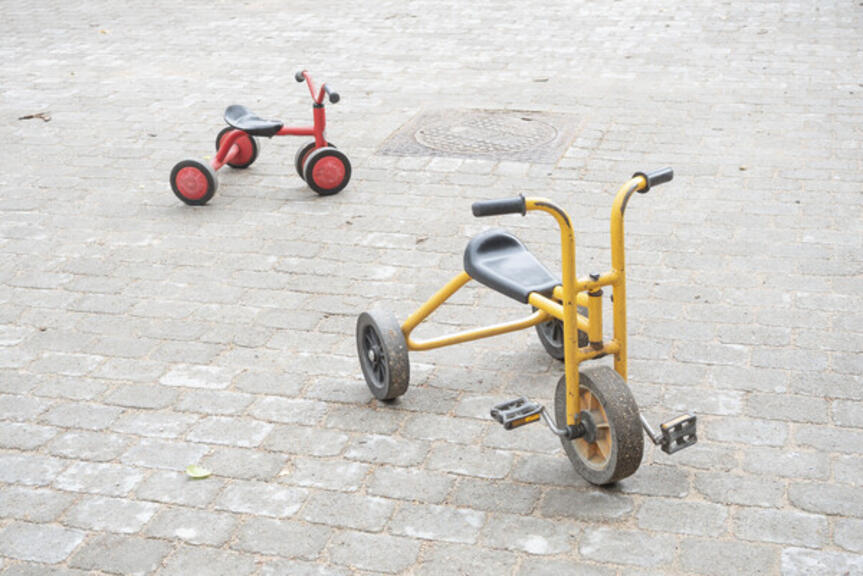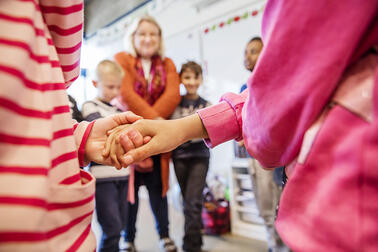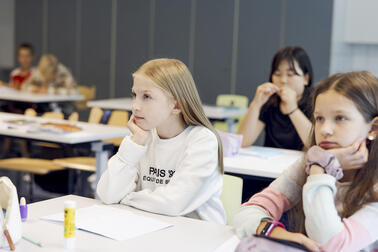
Coronavirus infections in children and youth have increased during the spring. Infections still come mainly from family members and there have been few further infections in daycare centres and schools. Two schools in Helsinki have had a more extensive range of infections during March.
The latest figures for the City of Helsinki show that the number of coronavirus infections in children is increasing. This is partly explained by the very active testing. Although there have been many exposures in schools and daycare centres, there have been few follow-on infections.
When examining the sources of the virus, it can be seen that one's own family is still by far the most significant source of coronavirus infection for children and young people. In addition to their own family, youth also emphasize social contacts outside the school and the family.
The most significant reason for the increase in the number of infections in children and youth, as well as in the general population, is probably the more susceptible virus variants.
Since the beginning of the year, the City of Helsinki has directed all those exposed to take a test, regardless of whether they display symptoms or not, or whether it concerns a virus variant or not. As a result, significantly more children of daycare age and distance learning are currently being tested.
In daycare aged children, the number of infections has increased relatively the most
The number of infections has increased relatively the most in daycare aged children during the early part of the year. At the same time, their testing has been very active. In contrast, testing numbers for 13- to 19-year-olds have clearly decreased in March.
The total number of infections among daycare age children is 3.5 times higher than at the beginning of the year (367 infections on 1 January and 1283 by 29 March). In other age groups of children and youth and in working age, the number of infections has also increased (2-3 times), but by less.
Children and youth accounted for 20 per cent of all Helsinki infections at the beginning of the year and 29 per cent at the end of March.
In daycare-age children, the share of the family as a source of infection is currently *) 64 per cent and the daycare centre 21 per cent.
For lower comprehensive school children, the most significant source of infection is their own family (56%), with the school accounting for 33 per cent. The share of 13–15-year-olds has their own family (85%), and they have been the source of infection in 4% of infections.
Among 16–19-year-olds, the family is also the most significant source of infection (72%), but infections also come from other social contacts (24%).
*) sources of infection at the end of week 13
Daycare centres and schools take great care of protection measures
Sanna
Isosomppi, Chief Physician of Epidemiological Operations, thanks the schools and daycare centres for their careful operations. Safe distances and hygiene have been adhered to.
– Teachers, school assistants, afternoon club leaders, kitchen and cleaning staff, janitors and other school staff have acted responsibly, as have the children and pupils. They have followed the guidelines well.
In Kallio and Käpylä schools, more extensive infections in March
Isosomppi points out that when the number of infections began to rise, the tracing of infections was unfortunately congested. Despite delays in identifying and reaching those exposed, the number of follow-up infections in daycare centres and schools has not increased significantly. During March, two schools have had more extensive infections.
A total of 49 infections were found in Kallio Comprehensive School, Lower Stage, during February - March. Because there were infections in more than one class, the whole school ended up being screened. This meant that all those preschoolers, students, and school staff who had not been tested because of a previous exposure were referred for coronavirus testing.
225 people participated in the mass screening. Four of those who participated in the mass screening were diagnosed with coronavirus infection, which is 1.8 percent of those screened. Based on the results of the screening, in addition to the previous ones, one group was quarantined. Kallio Comprehensive School, Lower Stage, has a total of 490 students.
A total of 41 infections were diagnosed at Käpylä comprehensive school during March. Käpylä Comprehensive School has a total of 929 students.
Unfortunately, tracking at Käpylä Comprehensive School was also delayed due to the rapidly deteriorating coronavirus situation in the Helsinki metropolitan area. Extensive quarantines were imposed in Käpylä and all those exposed were tested, says Sanna Isosomppi, Chief Physician of Epidemiological Operations.
–Fortunately, the jam has now been lifted, and all the cases that have come to light and those who have been exposed to them have been contacted, says Sanna Isosomppi.
– The delays caused by congestion have certainly frustrated families, as everyday arrangements have become more difficult. Of course, families have also been concerned about the spread of infections.
Mild disease
The disease is still mild or even asymptomatic in children.
– The public debate about the prevalence of infections in children and young people may be worrying, but their disease has not been more difficult than before, despite the new virus variants.
Picture: Paavo Jantunen


